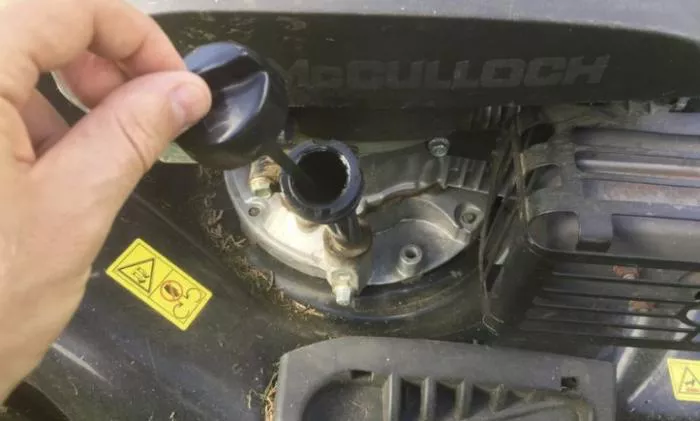Oil leakage in lawn mowers is a common issue that can lead to poor performance, increased fuel consumption, and even severe engine damage if left untreated. Small leaks may seem insignificant at first, but they can quickly develop into major problems that require costly repairs. Understanding the causes and solutions for oil leaks is essential for maintaining your equipment’s efficiency and longevity. This article provides a detailed guide on identifying, diagnosing, and fixing oil leaks in lawn mowers to help you keep your machine running smoothly.
Common Causes of Oil Leakage in Lawn Mowers
Oil leaks can occur for several reasons. Knowing the root cause helps in applying the right repair method.
Worn or Damaged Gaskets: The gasket between the engine block and oil pan can degrade over time. This allows oil to seep out.
Loose or Missing Bolts: If the bolts securing the oil pan or valve cover are loose, oil may escape.
Cracked Engine Components: Cracks in the engine block or oil pan can lead to leaks.
Overfilled Oil Tank: Too much oil increases pressure, forcing it out through weak points.
Damaged Seals: Worn crankshaft or camshaft seals can let oil leak.
Tools and Materials Needed for Repair
Before starting the repair, gather the necessary tools and materials.
Basic Tools: Wrenches, screwdrivers, pliers, and a socket set.
Replacement Parts: New gaskets, seals, or O-rings as needed.
Cleaning Supplies: Degreaser, rags, and a brush for cleaning oil residue.
Safety Gear: Gloves and safety glasses to protect yourself.
Step by Step Guide to Fixing Oil Leaks
Follow these steps to diagnose and repair oil leaks in your lawn mower.
Inspect the Source of the Leak
First, locate where the oil is leaking. Clean the engine with a degreaser to remove dirt and oil buildup. Run the mower for a few minutes and check for fresh oil leaks. Common leak points include the oil pan, valve cover, and crankshaft area.
Check the Oil Level
Ensure the oil level is correct. Overfilling can cause leaks. If the oil level is too high, drain some oil until it reaches the recommended mark on the dipstick.
Tighten Loose Bolts
Loose bolts are a common cause of leaks. Use a wrench to tighten all bolts on the oil pan and valve cover. Be careful not to overtighten, as this can strip the threads.
Replace Damaged Gaskets
If the gasket is worn or damaged, it must be replaced. Remove the oil pan or valve cover carefully. Scrape off the old gasket material and clean the surface. Install the new gasket and reassemble the parts.
Fix Cracked Engine Components
Small cracks in the oil pan can sometimes be repaired with epoxy. For larger cracks, replacing the oil pan is the best solution. If the engine block is cracked, professional repair may be needed.
Replace Worn Seals
Crankshaft and camshaft seals can wear out over time. To replace them, remove the old seal and install a new one. Make sure the new seal fits snugly to prevent future leaks.
Preventive Measures to Avoid Future Leaks
Regular maintenance can help prevent oil leaks.
Check Oil Levels Frequently: Always maintain the correct oil level.
Inspect Gaskets and Seals: Replace them before they fail.
Tighten Bolts Periodically: Ensure all bolts are secure.
Avoid Overfilling: Follow the manufacturer’s oil capacity guidelines.
Additional Tips for Long-Term Maintenance
To further extend the lifespan of your lawn mower and prevent oil leaks, consider these extra maintenance practices.
Use High-Quality Oil: Cheap or incorrect oil can degrade seals faster. Always use the oil grade recommended by the manufacturer.
Store Properly: When not in use, store the mower in a dry, covered area to prevent moisture damage to gaskets and seals.
Check for Debris: Grass clippings and dirt can accumulate around seals and gaskets, accelerating wear. Clean the engine area regularly.
Monitor Engine Temperature: Overheating can cause oil to thin and leak. Ensure the cooling fins are clean and the engine isn’t overworked.
When to Seek Professional Help
Some oil leaks are complex and require professional attention. If the leak persists after basic repairs, consult a mechanic. Major engine damage may need expert intervention.
Conclusion
Fixing oil leaks in lawn mowers is manageable with the right tools and knowledge. Regular inspections and maintenance can prevent leaks and extend the life of your mower. By following this guide, you can keep your lawn mower running smoothly and efficiently.
This article provides a comprehensive approach to diagnosing and repairing oil leaks. Proper care ensures your lawn mower remains in top condition for years to come. Taking the time to address small issues before they become major problems will save you money and frustration in the long run. Always refer to your owner’s manual for specific maintenance schedules and part specifications to keep your equipment in optimal working order.
Related topics:
- HOW TO START A SOVEREIGN PETROL LAWNMOWER?
- WHAT DOES A FUEL SOLENOID DO ON A LAWN MOWER?
- WHAT TO LOOK FOR WHEN BUYING A USED LAWN MOWER

